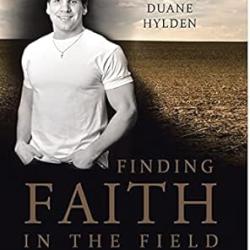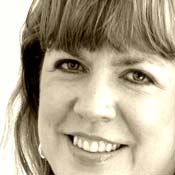The leaves are falling, falling as if from far up,
as if orchards were dying high in space.
Each leaf falls as if it were motioning "no."
And tonight the heavy earth is falling
away from all other stars in the loneliness.
We're all falling. This hand here is falling.
And look at the other one. It's in them all.
And yet there is Someone, whose hands
infinitely calm, holding up all this falling.
-- "Autumn" by Rainer Maria Rilke (translation by Robert Bly)
I always find myself extraordinarily energized by the arrival of fall: the crispness of the air, the slowly growing darkness, the simmering of soup on the stove, and the pulling on of wool sweaters.
I love to witness the great turning of the leaves toward radiance and then release. I have much to learn from trees about living brightly and then letting go at the right moment. I imagine what it must be like for the leaf to break free from the branch and flutter gently down to the earth, or sometimes forced off by gusts of wind. In those moments of falling does the leaf know it will be soon be received on the soft earth and be turned into compost and nourishment? And do I remember in my own moments of falling the trajectory of things?
I think of autumn and winter as the seasons of the monk, with their invitations to release and move into stillness. Our modern culture embraces the energies of spring and summer with their emphasis on perpetual blossoming and fruitfulness. But the entire cycle of creation offers us a wise reminder of what is necessary for the fullness of life. Releasing and resting are integral to the spring being able to arrive again.
In the great monastic traditions of Christianity, we find those ancient monks teaching us about this path of falling. The desert mothers and fathers left their lives in the cities behind, and fled to harsh landscapes to be stripped down to their essence. They longed to find God in that place of radical simplicity. The stories of these early wisdom guides reveal their desire to not be owned by things, but to live with an open-hearted and open-handed approach to life.
St. Benedict described the call to humility as essential for those wanting to live a contemplative life. Humility is really a call to let go of what is not ours to accomplish or do. It is a reminder of our own unique call in the world and a release of our need to save everyone and be indispensable. Humility means we recognize both our giftedness and limitation. It is how we learn to say both yes and no.
When I work with artists who struggle with perfectionism, I suggest purposely making "bad art"—art that is not meant to be a product, not designed for a particular purpose, but is simply the exploration of the freedom that comes when we stop trying to live into other people's standards and expectations.
Monastic wisdom calls us to enter into Sabbath rest as a source of goodness and renewal. How many of us do not practice Sabbath because we feel we have too much to do? There is a subtle message underlying this that the world cannot get by without our activity for a day.
Midlife often brings encounters with illness, the death of parents or other loved ones. We remember, as the monks practiced, that we will one day die. Memento mori, as this was called, was never meant to be a morbid fascination, but an impulse toward full presence to life in this moment. In our awareness of the great release we must all face, we are brought closer to what is most important.
I have witnessed the pain of life's unraveling, the moments when I want nothing less than to let go: sitting vigil with my mother in the hospital as her body was overwhelmed by infection and finally succumbed; my mother-in-law's decline with Alzheimer's and the long, slow fall of her vibrancy and descent into a dark land without memory. Autumn's stripping away sometimes feels unbearable. And then this season of falling offered me solace in the months after their deaths as I discovered beauty in the great release. Cherishing the moment became the only option in the wake of loss.
The nature of the human mind is to grasp onto things, to try and figure life out, to try and maintain control when things feel chaotic and wild. Monastic wisdom teaches us that this kind of grasping hardens our minds, our hearts, and our bodies. Our lifelong journey is always toward a softening, a greater tenderness, so that we can meet life with a raw opening toward beauty and wonder.
Contemplation calls us into silence and stillness, to let go of the hold that the onslaught of information has on our attention, and direct our awareness to something more subtle. We learn slowly to listen to a different voice, other than the one that chatters incessantly in our minds.
In the Celtic tradition, nature was considered the first book of revelation. The poet William Stafford wrote about the "scripture of the leaves," which the monks would have read and pondered.
The great wisdom of autumn is in the falling. It calls us to imagine entering into the journey of the leaf as it descends. We are never done with relinquishing what we hold most dear. Ego, possessions, expectations, accomplishments, control, these are the things that seize us as much as we seize them. Each year invites us to fall again.
9/9/2014 4:00:00 AM





